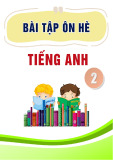
TNU Journal of Science and Technology 230(04): 299 - 306
http://jst.tnu.edu.vn 299 Email: jst@tnu.edu.vn
VIETNAMESE TERTIARY EFL TEACHERS’ SELF-EFFICACY AND
INFORMATION AND COMMUNICATION TECHNOLOGY INTEGRATION
Nguyen Huu Hoang
*
Academy of Journalism and Communication
ARTICLE INFO ABSTRACT
Received:
25/02/2025
This mixed
-
methods study examines Vietnamese tertiary EFL teachers'
self-efficacy and information and communication technology
integration practices. Survey data from 84 lecturers revealed
moderately high self-
efficacy, with highest confidence in instructional
strategies and lowest in student engagement. SAMR model analysis
showed predominantly lower-level integration, with Subst
itution and
Augmentation activities dominating over transformative Modification
and Redefinition approaches. Document analysis of lesson plans
confirmed this pattern. Significant positive correlations emerged
between self-efficacy and all integration level
s, strongest for
Modification activities (r = 0.61, p < 0.001). Notably, correlation
strengths declined for Redefinition activities despite high self-
efficacy,
indicating institutional constraints limit implementation of the most
transformative practices r
egardless of teacher confidence. Qualitative
data from interviews identified time constraints, curriculum pressures,
and institutional expectations as key influencing factors. Findings
underscore the need for targeted professional development addressing
pe
dagogical applications of technology and institutional reforms
supporting transformative ICT use in Vietnamese EFL contexts.
Revised:
17/04/2025
Published:
19/04/2025
KEYWORDS
Self-efficacy
ICT integration
SAMR model
EFL teachers
Vietnamese tertiary education
MỐI QUAN HỆ GIỮA NIỀM TIN VÀO NĂNG LỰC BẢN THÂN VÀ MỨC ĐỘ
TÍCH HỢP CÔNG NGHỆ CỦA GIẢNG VIÊN TIẾNG ANH TẠI VIỆT NAM
Nguyễn Hữu Hoàng
Học viện Báo chí và Tuyên truyền
THÔNG TIN BÀI BÁO TÓM TẮT
Ngày nhậ
n bài:
25/02/2025
Nghiên cứu hỗn hợp này xem xét mối quan hệ giữa niề
m tin vào năng
lực bản thân và mức độ tích hợp công nghệ của giảng viên tiế
ng Anh
bậc đại học tại Việt Nam. Dữ liệu từ 84 giảng viên cho thấy mức độ tự
tin nghề nghiệp tương đối cao, cao nhất trong chiến lược giảng dạ
y và
thấp nhất trong việ
c thu hút sinh viên. Phân tích theo mô hình SAMR
cho thấy sự tích hợp chủ yếu ở mức Thay thế và Tăng cường, đượ
c xác
nhận qua phân tích giáo án. Nghiên cứu tìm thấy mối tương quan thuậ
n
đáng kể giữa tự tin nghề nghiệp và tất cả các mức độ tích hợp, mạ
nh
nhất với hoạt động Điều chỉnh (r = 0,61, p < 0,001). Cường độ
tương
quan giảm đối với hoạt động Tái định nghĩa mặc dù có niềm tin nghề
nghiệp cao, cho thấy các ràng buộc thể chế hạn chế việc thực hiệ
n các
phương pháp chuyển đổi bất kể sự tự tin của giảng viên. Phỏng vấ
n xác
định giới hạn thời gian, áp lực chương trình giảng dạy và kỳ vọng củ
a
tổ chức là yếu tố ảnh hưởng chính. Nghiên cứu đề xuất phát triể
n
chuyên môn tập trung vào ứng dụng sư phạm của công nghệ và cả
i cách
thể chế hỗ trợ việc sử dụng công nghệ mang tính chuyển đổi trong bố
i
cảnh giảng dạy tiếng Anh tại Việt Nam.
Ngày hoàn thiệ
n:
17/04/2025
Ngày đăng:
19/04/2025
TỪ KHÓA
Niềm tin vào năng lực bản thân
Tích hợp công nghệ
Mô hình SAMR
Giáo viên tiếng Anh
Bậc đại học tại Việt Nam
DOI: https://doi.org/10.34238/tnu-jst.12131
Email:huuhoang309@gmail.com

TNU Journal of Science and Technology 230(04): 299 - 306
http://jst.tnu.edu.vn 300 Email: jst@tnu.edu.vn
1. Introduction
Information and Communication Technology (ICT) integration has become essential in education,
transforming traditional teaching practices across disciplines [1], [2]. Among factors influencing
technology adoption in educational settings, teacher self-efficacy—educators' confidence in their
ability to incorporate technology effectively—has emerged as a critical determinant of successful
implementation [3], [4]. This relationship between self-efficacy and technology use is particularly
important as educators navigate increasingly digital learning environments [4], [5].
The theoretical foundation for understanding teacher self-efficacy can be traced to Bandura's [6]
social cognitive theory, which established self-efficacy as a fundamental determinant of human
behavior. Building on this foundation, Tschannen-Moran and Hoy [7] conceptualized teacher self-
efficacy specifically as an educator's belief in their capacity to influence student learning and
achievement. This self-perception directly affects instructional choices, pedagogical approaches,
and willingness to innovate—including decisions regarding technology integration [8], [9].
For analyzing technology integration levels, Puentedura's [10] SAMR model provides a
valuable framework. This model evaluates technology integration through four progressive
levels: Substitution (direct tool replacement), Augmentation (functional improvement),
Modification (task redesign), and Redefinition (creation of previously inconceivable tasks).
While this model has been widely adopted in educational technology research, Hamilton et al.
[11] critique its hierarchical structure and technological determinism, noting that it sometimes
oversimplifies the complex relationship between pedagogy and technology. Despite these
critiques, the SAMR model offers a useful analytical lens for understanding technology
integration patterns when applied with sensitivity to specific educational contexts.
In language education, particularly in English as a foreign language (EFL) contexts,
technology offers unique opportunities for enhancing language acquisition through increased
exposure to authentic materials, interactive learning environments, and autonomous learning
opportunities [12]. Basal [13] demonstrated the utility of the SAMR model in language education
by applying the framework to assess digital storytelling in EFL writing instruction. ICT
integration in EFL instruction enhances language learning through student motivation, authentic
material access, and autonomous learning opportunities [13].
While the COVID-19 pandemic accelerated technology adoption in education globally [14],
implementation challenges persist, particularly in developing contexts. These challenges are often
amplified in language education, where effective technology integration requires not only
technical proficiency but also pedagogical innovation [14], [15]. Scherer and Teo's [16] meta-
analysis confirmed positive correlations between teacher self-efficacy and technology
implementation, emphasizing that this relationship is neither simple nor unidirectional. In
language teaching specifically, Choi and Lee [17] found that EFL teachers with higher self-
efficacy implemented technology more effectively, influencing both the frequency and
sophistication of technology use.
In the Vietnamese educational context, the government has implemented various policies
promoting educational technology integration [5]. Peeraer and Van Petegem [18] documented
Vietnam's efforts to transition from basic technology integration toward more transformative
educational practices. However, despite increased policy emphasis on technology-enhanced
instruction, successful implementation depends heavily on teachers' readiness and confidence to
adopt these technologies. Ngo and Eichelberger [19] identified persistent barriers to effective ICT
integration in Vietnamese educational settings, including inadequate infrastructure, limited
professional development opportunities, and curricular constraints.
The Vietnamese tertiary education context presents additional unique considerations for ICT
integration, including traditionally teacher-centered pedagogical approaches that may conflict
with the student-centered paradigms often associated with technology-enhanced learning. These

TNU Journal of Science and Technology 230(04): 299 - 306
http://jst.tnu.edu.vn 301 Email: jst@tnu.edu.vn
contextual factors necessitate examining ICT integration through a culturally situated lens rather
than uncritically applying universal models or frameworks.
Previous research by Hoang and Wyatt [20] has established moderate levels of general self-
efficacy among Vietnamese EFL teachers, but studies specifically examining technology-specific
self-efficacy in this context remain scarce. While separate studies have examined teacher self-
efficacy [12] and ICT implementation challenges [15] in Vietnam, research investigating the
intersection of these factors is notably absent from the literature. This represents a critical gap in
understanding the complex dynamics of technology adoption in Vietnamese language education.
This study aims to address these research gaps by investigating the relationship between
Vietnamese tertiary EFL teachers' self-efficacy and their ICT integration practices using the
SAMR model as an analytical framework. By examining how teacher confidence relates to
technology implementation across different integration levels, this research seeks to inform
policymakers, administrators, and teacher educators about the factors influencing ICT integration
in Vietnamese tertiary EFL classrooms. The findings will contribute to developing more effective
professional development programs and support systems for Vietnamese EFL teachers, with
potential implications for technology adoption in similar developing contexts.
The study addresses three specific research questions (RQ):
RQ1: How do Vietnamese tertiary EFL teachers perceive their self-efficacy about ICT
integration in teaching?
RQ2: What are the levels of ICT integration in the classrooms of Vietnamese tertiary EFL
teachers, based on the SAMR model?
RQ3: Is there a relationship between the self-efficacy of Vietnamese tertiary EFL teachers and
their level of ICT integration in the classroom?
2. Methodology
This study employed an explanatory sequential mixed methods design [20] with quantitative
data collection and analysis followed by qualitative exploration. The sample comprised 84
Vietnamese tertiary EFL teachers recruited through purposive and snowball sampling.
Participants had at least one year of teaching experience, with demographic information collected
for analysis of potential influences on self-efficacy and ICT integration.
Two adapted instruments were used: (1) The Teachers' Sense of Efficacy Scale [9], modified
to focus on ICT integration in EFL teaching using a 9-point Likert scale, and (2) The SAMR
Model Survey [21], comprising 20 items categorizing technology-enhanced activities according
to SAMR levels using a 5-point frequency scale. Both instruments underwent translation/back-
translation and pilot testing (n = 20) to ensure validity and reliability.
Qualitative data collection included semi-structured interviews with 20 participants selected
through maximum variation sampling to represent diverse self-efficacy levels, teaching
experience ranges, and institutional contexts. Additionally, 60 lesson plans (3 per interviewed
teacher) were analyzed using a SAMR model-based coding scheme, providing triangulation
between self-reported practices and planning documents.
Data collection occurred over four months, with surveys administered online followed by
video-conference interviews lasting 45-60 minutes. Quantitative data were analyzed using SPSS
27, with descriptive statistics examining self-efficacy perceptions and Pearson's correlation
coefficient assessing relationships between self-efficacy and ICT integration levels. Qualitative
data were analyzed using Braun and Clarke's [22] thematic analysis approach, with two
researchers independently coding before reaching consensus to enhance reliability. To ensure
qualitative data trustworthiness, member checking was implemented through participant
verification of transcripts and interpretations, while peer debriefing with two independent
research colleagues provided external validation throughout the analysis. This mixed-methods
analysis provided comprehensive understanding of the relationship between teachers' self-

TNU Journal of Science and Technology 230(04): 299 - 306
http://jst.tnu.edu.vn 302 Email: jst@tnu.edu.vn
efficacy and ICT integration practices while illuminating key contextual factors including
institutional infrastructure and resources, educational policies regarding technology integration,
traditional teacher-centered pedagogical approaches, professional development opportunities,
student digital literacy levels, and administrative expectations.
3. Results and Discussion
3.1. Results
3.1.1. Vietnamese tertiary EFL teachers' self-efficacy
To address the first research question regarding teachers' perceived self-efficacy about ICT
integration in teaching, descriptive statistics were calculated for the adapted teachers' sense of
efficacy scale (TSES). The overall mean score for self-efficacy was 6.78 (SD = 1.23) on a 9-point
scale, indicating a moderately high level of self-efficacy among participants.
Analysis of self-efficacy dimensions revealed that teachers felt most confident in their ability
to implement instructional strategies using ICT (M = 7.12, SD = 1.18), followed by managing
their classrooms with technology (M = 6.77, SD = 1.29). They reported slightly lower self-
efficacy in engaging students through ICT use (M = 6.45, SD = 1.35). The negative skewness
values across all dimensions suggested a tendency toward higher self-efficacy scores, indicating
generally positive perceptions of ICT-related abilities among participants.
Qualitative data from interviews provided deeper insights into teachers' self-efficacy
perceptions. Thematic analysis revealed three primary themes: (1) confidence in basic ICT tasks,
(2) uncertainty with advanced applications, and (3) context-dependent self-efficacy. These
themes emerged consistently across interviews, suggesting a nuanced understanding of self-
efficacy among participants. As one teacher explained: "I'm very comfortable using PowerPoint
and online quizzes in my daily teaching. However, when it comes to more complex tasks like
creating interactive online content or managing virtual classroom discussions, I often feel less
sure of my abilities" (Participant 7).
This sentiment was echoed by 68% of the interviewees (n = 14), indicating a prevalent pattern
of varying self-efficacy levels depending on the complexity of the ICT task. The interview data
revealed teachers' confidence with familiar technologies (presentation software, online quizzes,
digital repositories) that supported established practices, but diminished self-efficacy with
innovative applications requiring advanced skills—specifically interactive content creation,
virtual classroom management, and multimedia authoring platforms mentioned by participants.
This finding underscores the importance of considering task-specific self-efficacy when
examining ICT integration in EFL contexts, as teachers' confidence varies substantially across
different technological tools and implementations.
3.1.2. Levels of ICT integration
Addressing the second research question on ICT integration levels based on the SAMR model,
survey analysis revealed a clear hierarchical pattern. Substitution-level activities predominated (M
= 3.85, SD = 0.92), followed by Augmentation (M = 3.42, SD = 1.05), while transformative
practices were less common – Modification (M = 2.73, SD = 1.18) and Redefinition (M = 2.01, SD
= 1.31). This pattern indicates widespread yet primarily enhancement-focused technology use.
Document analysis confirmed this distribution: 41.7% of lesson plans showed Substitution,
33.3% Augmentation, 18.3% Modification, and only 6.7% Redefinition. Interviews revealed three
key factors explaining this pattern: tool familiarity, preparation time constraints, and curriculum
alignment pressures. As participant 4 noted: "PowerPoint replaces blackboard writing efficiently
while saving class time" – a sentiment reflecting pragmatic technology adoption decisions.
Institutional expectations further reinforced lower-level integration, with 65% of participants
citing curriculum coverage concerns that discouraged technological experimentation. This

TNU Journal of Science and Technology 230(04): 299 - 306
http://jst.tnu.edu.vn 303 Email: jst@tnu.edu.vn
finding highlights how systemic factors, beyond individual preferences, significantly influence
teachers' ICT implementation choices.
3.1.3. Relationship between self-efficacy and ICT integration
The third research question examined the relationship between teachers' self-efficacy and their
level of ICT integration. Pearson correlation analysis revealed significant positive correlations
between self-efficacy scores and all SAMR levels of technology integration. The strongest
correlation was observed with Modification-level activities (r = 0.61, p < 0.001), followed by
Augmentation (r = 0.53, p < 0.001), Redefinition (r = 0.48, p < 0.001), and Substitution (r = 0.42,
p < 0.001). These findings indicate that higher self-efficacy is associated with more advanced and
transformative ICT integration practices, with particularly strong connections to activities
involving significant task redesign.
Interview data provided concrete examples illustrating these correlations. Teachers reporting
higher self-efficacy typically described more diverse and sophisticated technology applications:
"I enjoy experimenting with new digital tools. Recently, I implemented a digital storytelling
project where students created multimedia narratives, combining language practice with digital
literacy skills" (Participant 11). Conversely, teachers with lower self-efficacy tended to describe
more basic applications: "I mainly use technology for straightforward tasks like displaying
vocabulary lists or playing audio recordings for listening exercises" (Participant 6).
Further qualitative analysis revealed that self-efficacy influenced not just the complexity of
technology use but also teachers' resilience when facing technical challenges. Higher-efficacy
teachers described persistence through technical difficulties and willingness to troubleshoot
problems, while lower-efficacy teachers often reverted to non-digital alternatives when
encountering obstacles. This pattern suggests that self-efficacy functions as both an enabler of
advanced technology integration and a buffer against implementation challenges.
The correlation between self-efficacy and Modification-level activities being stronger than
with Redefinition-level activities suggests that even teachers with high confidence may face
additional barriers to implementing the most transformative practices. Interview data indicated
that institutional factors, including assessment requirements and syllabus constraints, often
limited opportunities for Redefinition-level integration regardless of personal confidence levels.
This finding highlights how self-efficacy, while important, operates within broader institutional
contexts that can either facilitate or hinder transformative technology use.
3.2. Discussions
3.2.1. Teachers' Self-Efficacy in ICT Integration
The moderately high self-efficacy scores (M = 6.78) among Vietnamese tertiary EFL teachers
mask critical disparities that warrant examination. While teachers expressed confidence in
instructional strategies (M = 7.12), their lower self-efficacy in student engagement (M = 6.45)
reveals a problematic gap between technical ability and pedagogical application. This disparity
aligns with Zhang's [12] observation that technological confidence often fails to generate
authentic pedagogical transformation—a concern validated by our finding that most ICT
integration remains at basic Substitution and Augmentation levels.
This pattern suggests Vietnamese educational policies [5] have succeeded in promoting basic
technological adoption but fallen short in fostering transformative implementation. The emphasis
on technology-enhanced instruction appears to reinforce existing teaching methods rather than
catalyzing pedagogical innovation. This represents a critical limitation of current approaches to
ICT integration in Vietnamese tertiary education.
The context-dependent nature of self-efficacy revealed in our qualitative findings challenges
Bandura's [8] original conceptualization. Teachers demonstrate graduated confidence that varies

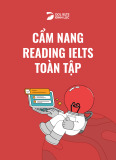

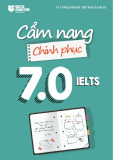
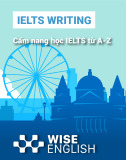



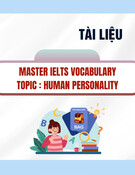
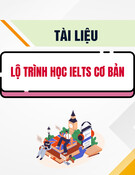
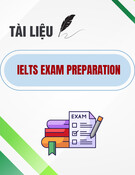

![Tài liệu Từ vựng tiếng Anh Trung cấp [mới nhất]](https://cdn.tailieu.vn/images/document/thumbnail/2025/20250913/nguyentuan250421@gmail.com/135x160/99491757910839.jpg)
![Tài liệu Từ vựng Tiếng Anh theo chủ đề [mới nhất]](https://cdn.tailieu.vn/images/document/thumbnail/2025/20250913/namdhuet@gmail.com/135x160/83251757753810.jpg)
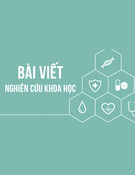
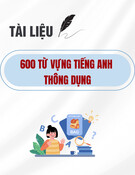
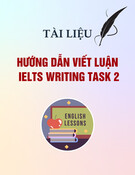
![Tài liệu Từ vựng tiếng Anh cho bé [chuẩn nhất/mới nhất]](https://cdn.tailieu.vn/images/document/thumbnail/2025/20250731/huadaithesang2509@gmail.com/135x160/18631754013896.jpg)





